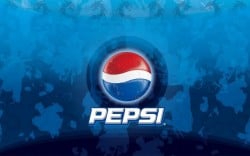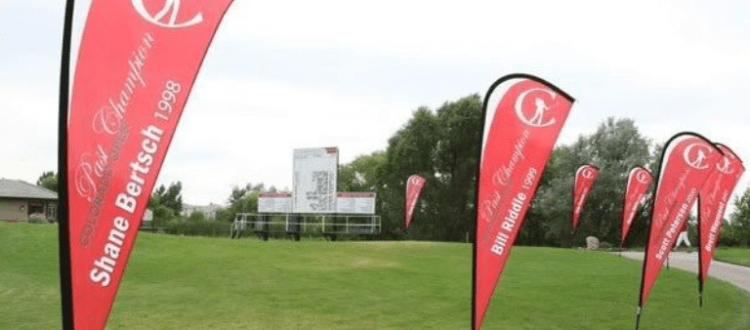The advertising strategies to consider when promoting your products or services at an outdoor event.
Question: Today Al W. asks, “We are going to be attending, as a sponsor, a large 3 on 3 basketball competition. What is the most effective advertising we can provide for an outdoor event?
Thanks for the question, Al. As with any advertising, outdoor advertising will be about your headlines and content, especially offers that intrigue passersby. Where you advertise is somewhat irrelevant.
Fundamentally, as you know, even if your company has a recognized brand, it will always be a fight to stay on top. The number two soft drink will always be gunning to knock the number one soft drink to number two. Listening to your core market is important, but you still need to stick to your guns if your product is, in your opinion, the best.
 Back in the ‘80’s, Pepsi-Cola® mounted the “Pepsi® Challenge” with a series of highly successful ads where supermarket “shoppers” were given a blind taste test to see which cola, Pepsi-Cola® or Coca-Cola®, was preferred based solely on a small sampling of the two colas. This was, on the surface, a legitimate test, and Pepsi-Cola® came out the winner by a fairly wide margin.
Back in the ‘80’s, Pepsi-Cola® mounted the “Pepsi® Challenge” with a series of highly successful ads where supermarket “shoppers” were given a blind taste test to see which cola, Pepsi-Cola® or Coca-Cola®, was preferred based solely on a small sampling of the two colas. This was, on the surface, a legitimate test, and Pepsi-Cola® came out the winner by a fairly wide margin.
The executives at Coca-Cola®, were naturally alarmed. What had Pepsi-Cola® done to make there cola taste better to consumers? Pepsi-Cola® sales shot up and Coca-Cola® sales slid.
How Pepsi Cola Marketed their Product
In his ground-breaking book Blink, Malcolm Gladwell unwraps what actually happened. The tests, he says, were valid. 57% of the taste testers, both with Pepsi-Cola® and Coca-Cola® blind testing said that Pepsi-Cola® tasted better. In the early 1970’s, 14% of soda drinkers said they drank Coca-Cola® exclusively, compared, at that time, to 4% for Pepsi-Cola®.
By the early 1980’s, Pepsi-Cola® boasted 11%, an almost 300% gain, whereas Coca-Cola® had slipped to 12%, a loss of about 15%. So the execs at Coca-Cola® had the right to be afraid, very afraid. One thing I’ve learned over the years in business is that decisions made under pressure, particularly financial pressure, tend to do precisely what you’re trying to avoid – making matters worse. This is true in government, war, marriage. And business.
Thus, the previously mentioned panic and fail, New Coke®. Roy Stout, who at that time was the head of the marketing research department, urged Coca-Cola® to take the “Pepsi® Challenge” seriously. He was, to a degree, correct. Stout asked why, when Coca-Cola® had twice the vending machines, more shelf space in the supermarkets, and spent way more on advertising than Pepsi-Cola®, why was market share eroding. Legitimate questions. Lousy answers, at least initially.
Working Against Failure
Obviously, something needed to be done, and in one of the biggest fails of all time, Coca-Cola® launched into re-formulating the recipe for Coca-Cola®. Make it lighter and sweeter, like Pepsi®. The new recipes were tasted tested, and Coke® pulled up to even. 50/50 was a massive improvement, and by 1984, they issued their own challenge with New Coke®. The Coca-Cola® executives were elated as they trounced Pepsi-Cola® by six to eight percent in their own new challenge.
Boldly, Coca-Cola® CEO Roberto C. Goizueta called a press conference and announced the launch of New Coke®, calling it “the surest move the company’s ever made.” And he had the testing to prove it. Hundreds of thousands of consumers had spoken. Coca-Cola® had answered the call. How could this fail?
Suddenly, sales of the new cola plummeted sales so quickly that Coca-Cola® quickly restored the old cola to stores and licked their wounds. New Coke® went away nearly as quickly as it had arrived. Probably quicker. Coca-Cola® quickly restored the original Coca-Cola® to stores and vending machines, and Coca-Cola® is still the number one drink in the world. Which begs the question, “What went wrong?”
The Market Research Approach
Market research is a good thing. But it has limitations, as is shown by the New Coke® fiasco. And there are dozens of examples of this. So, what did go wrong? Gladwell states that the “Pepsi® Challenge” was based on a method called the “central location test” (CLT) in which the taste testers, at a given location like the aisle of a supermarket, tried a sip of each beverage and chose the one that tasted the best – based on one sip. Kind of like giving the Ford Edsel® a “thumbs up” based on looking at the front bumper only.
However, when you purchase a can of Coca-Cola® or Pepsi-Cola®, you do not take a sip and throw the can away. Just like you don’t buy a cake, eat the maraschino cherry off the top, and ignore the rest of the cake and frosting. In the “Pepsi® Challenge”, the edge went to initial sweetness, but in subsequent home usage testing, where testers were given a case of each product to test at home, Coca-Cola® was chosen more often as the sweetness of the Pepsi-Cola® became too sweet, and the citrus burst at the first sip dissipated over the course of drinking an entire can or bottle of the Pepsi-Cola®. By the end of a can of Coca-Cola®, more drinkers preferred the “raisiny-vanilla taste of Coke.”
Was the “Pepsi® Challenge” a fraud? No. It was only one way of testing a product. Had Coca-Cola® been more diligent in their research, they could have avoided several years of pain and exorbitant cost.
Applying the Ideas for Outdoor Advertising
 So, Al is asking at this point what this has to do with outdoor advertising, and the answer is “everything,” and “nothing.” You are not, I presume, selling Coca-Cola®. You may be selling computer tablets that are competing with the leading tablets in the industry, so you have to compete head-to-head with some well-established companies. How are you going to do this?
So, Al is asking at this point what this has to do with outdoor advertising, and the answer is “everything,” and “nothing.” You are not, I presume, selling Coca-Cola®. You may be selling computer tablets that are competing with the leading tablets in the industry, so you have to compete head-to-head with some well-established companies. How are you going to do this?
Are you going to advertise the “tablet challenge?” Down and dirty hand-to-hand combat with Apple and IBM? Or are you going to compete on price? That is a very effective way to gain market share, although it’s ultimately a slippery slope and the life of your ROI on this strategy is one to two years, unless you or the company you’re representing comes up with a brilliant encore within that time frame. That can happen. Apple Computers is the master of this strategy, but never sacrifices pricing and has developed a cult following that will pay above market pricing to get the latest Apple toy.
So, whatever strategy you use, indoors or out, the product must be clearly stated and a call to action clearly stated, whether it’s scanning a QR code or signing up for a money back guaranteed test of the new tablet in the “tablet challenge.” The fundamentals of great advertising never change, no matter what the size or venue of the event, whether you’re advertising on TV during the Super Bowl, or with a banner on the exterior wall of your business.
Good resources for the fundamentals of advertising are likely not available with your local advertising agency which will focus on making the appearance of your message look good, but can be found in some excellent books like Claude Hopkin’s Scientific Advertising, David Ogilvy’s Ogilvy On Advertising, and John Caple’s Tested Advertising Methods. These are not flashy methods like the amusing beer ads during the Super Bowl, but solid advertising methodology that works, decade after decade.
This is not to say, of course, that humor and good art cannot be effective, but the underlying principles of advertising will never change. As Gary Halbert said (paraphrased because I don’t want to take the time to find the exact quote), the secret to selling lots of hamburgers is a hungry crowd. Good luck!
For offline advertising tools you can potentially make use of, Visigraph presents all sorts of high-end printing of banners, signs, stickers, decals, and trade show displays.
Popular Posts:




